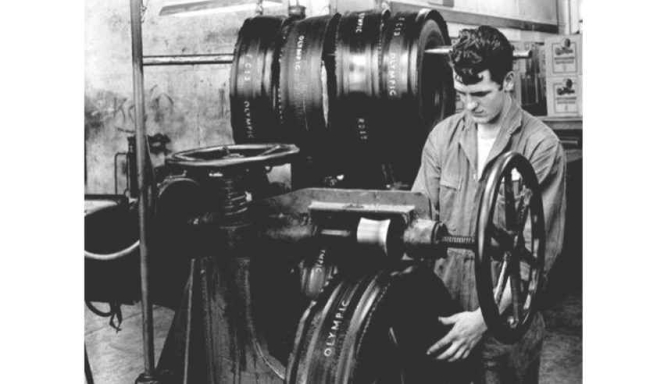
Nothing is stable. Technology is continuously evaluated. Materials science, electronics and software are the main three engines that reverse reactions or open new horizons.
Tyres are always known as black and round. However, the tyre engineers are aware of the weight achieved, the construction and the types of materials used in the tyres. What was the ancestor of the tyre, where is it going now?
The tyres were rated very quickly after vulcanisation 150 years ago. The first use of synthetic rubber and synthetic fibers, as well as the first radial tyre, go back around 70 years. Programming the control of the tyre building and curing machines with sensors and timer was a cornerstone. The new chemicals and advanced materials which suit well for process control, more homogeneous mixing, material integration and long-lasting rubber products.
Today's tyres last to the end of their useful life, which is primarily measured by the Remaining Tread Depth (RTD) which is greater than a limit value set by local legal approval. Twenty years ago, many defective tyres were found in scrapyards that were almost like new, but today the tyre will last almost lifetime.
Today, Mechanical rubber derivatives production machine parts are made to tighter tolerances. The integrity of the main body material is higher than in previous years. Alloys or composites are widely used compared to recent years. More controlled and homogeneous surface finishing is applied. Modern tyre production machines are equipped with robotics, full sensors and automation, stepper motors and greater controllability which are examples of the harmonization of creativity and innovation in the industry.
More than all that, today manufacturing machines are more purpose oriented, lighter, sensitive and modular.

The other very preliminary point of view is to analyse the needs of the main processes and what should be the strategy when you have an idea to buy new machines?
Every system needs new machines to install for a reason. It is used either to increase capacity or to renew a range of products, just to modernise or update technology. What should be the strategy when you have an idea to buy new machines? Either you are looking for a machine that matches your technology or you are taking the risk of a technology upgrade. The same category but a more efficient, more productive, safer and more controllable machine may be preferred or a completely new technology may be chosen.
If a very new technology is chosen, the time it takes to adapt can result in large production losses. It may take longer to adapt, etc. However, if you don't take such a risk, how will you manage the technology update in later years?
The other very preliminary point of view is to analyse the needs of the main processes. For example, if you are a tyre manufacturer, customers will only know your brand name. You are responsible for the end product. Third parties do not know where to start preparing tyres or what process to use to make them.
For example, you can have a textile calendar or you can get calendered textile and steel layers on the outside. When using a supplier, you don't need a factory calender machine. This also applies to the compounds used in the manufacture of the components. Today, a large volume of masterbatch is used in the rubber products industry. Organizing a good supply chain for manufacturing rubber compounds eliminates the need for mixers, a few mils, large silos, or process oil tanks.
A review of all processes and machine setup is necessary at regular intervals in order to remain competitive. Fewer production machines can increase productivity and controllability and intensify management. Less personal use, less energy and maintenance costs can be achieved. However, alternative suppliers need to be developed and diversified.
In the past, some particularly large tyre manufacturers had tyre cord treatment units in tyre factories. Some of them have steel wire production facilities for their own supply. Today we are witnessing a complete change of mind. The focus on the main process areas is mainly taken into account, which has completely changed the perspective in business. Today, most tyre manufacturers contract out the processing of 2nd class compounds. So, there is no refinery mill machines in tyre factories. The heating of the rubber in the preparation zones of the main components is carried out by cold feed extruders. Large capacity extruders are used under the drop door in mixing rooms. As a result, there are very few milling machine and milling operators in the tyre factory. Factory structures are smaller, parts production and machine maintenance are outsourced.
Full robot transfer units already exist, No man-tyre building and curing are achievable now. Profile extruders are already disabled, calendering might be totally needless by body ply webbing on tyre building drums.
Being open and innovative in the tyre and rubber industry is important. Support for technological innovation and productivity, as well as the vision to find more efficient devices, is required. New control systems with computers and automation are inevitable. Indeed, the company's employees must have a vision to choose the last and the best for the future. The most important thing is to find profitable solutions for the entire company.
As you follow the progress of the machine, keep in mind that new materials are coming. Any fashionable material will one day be a burden on the staff. Major hardware changes require new processes or machines. The ultimate case is the cancellation of part of the process, which means the cancellation of the production machines. Such a case can be irresistible at any time.
The increasingly demanding structure of the automotive industry and regulations will demand ever lighter, more environmentally friendly and more rolling-resistant tyres, which repeatedly calls for ambitious innovations. Innovative materials are inevitable to exceed expectations. Just as new materials come out of the R&D thicket box and enter the daily production inventory, the production area and machinery should be reorganised.
Full robot transfer units already exist in many phases instead of being transported. There are automatic scan and uniformity checks. No man tyre building and curing operations are achievable now. Profile extruders are already being phased out in some tyre factories. Body ply webbing could be more of a standard technology in tyre building. Calendering may be totally needless in tyre plants.
As far as automation and controllability technologies assess, there is still room for refinement or cancellation of production processes and machines in tyre factories.
Today, Mechanical rubber products production machine’ parts are made to tighter tolerances. The integrity of the main body material is higher than in previous years. (TT)
Vredestein Quatrac Pro+ Wins Top Spanish All-Season Tyre Award
- By TT News
- December 31, 2025
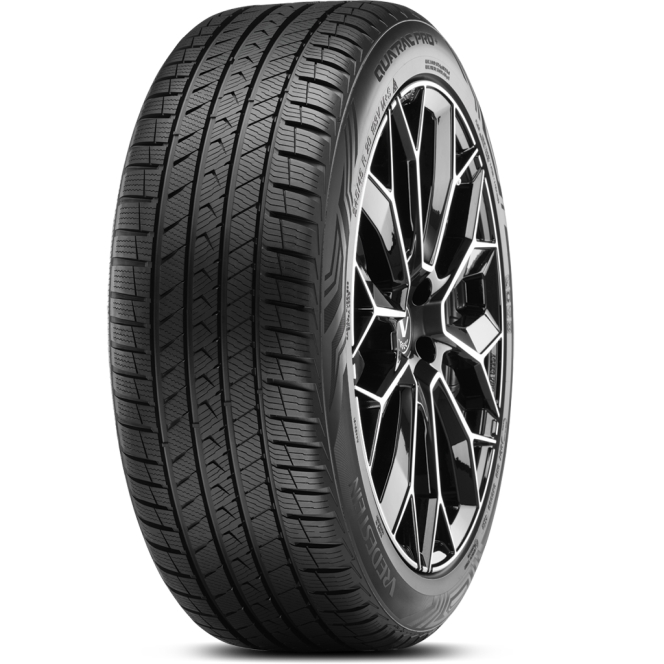
The Vredestein Quatrac Pro+ has been named ‘All Season Tyre of the Year’ at Spain’s prestigious industry awards organised by Neumáticos y Mecánica Rápida magazine and Posventa.com. This premium tyre, manufactured in Europe by Apollo Tyres Ltd, prevailed in a competitive field by excelling in critical areas such as safety, technological innovation and everyday usability, as determined by both an independent expert jury and reader votes.
The tyre earned this honour by delivering exceptional, versatile performance across diverse conditions, providing reliable safety and control on dry roads, in wet weather and through light snow. It also achieves high marks for driving comfort and efficiency. Developed to meet the needs of passenger cars and high-performance SUVs, the Quatrac Pro+ responds to the growing consumer demand for a single, year-round tyre solution that does not compromise on capability or driver confidence.
This award solidifies Vredestein’s position as a leading and innovative reference brand within the all-season tyre market. The official award ceremony is scheduled for February during the annual Tyre of the Year event, which will convene prominent representatives from across Spain’s tyre, automotive and aftermarket industries to celebrate the year’s top products.
Yves Pouliquen, Vice President, Commercial EMEA, Apollo Tyres Ltd, said, “This award is a strong endorsement of our commitment to delivering premium, high-performance all-season tyres tailored to the needs of European drivers. The Quatrac Pro+ encapsulates Vredestein’s longstanding expertise in all-season technology, combining safety, comfort and innovation.”
- INDIAN TYRE INDUSTRY
- TYRE RETREADING
- BIS STANDARDS
- IS 15704
- ECE R109
- CIRCULAR ECONOMY
- MSME CHALLENGES
- AUTOMOTIVE REGULATION
- CARBON REDUCTION
- FREIGHT
- LOGISTICS
Retreading Hangs In Balance Over Regulatory Conundrum
- By Gaurav Nandi
- December 30, 2025
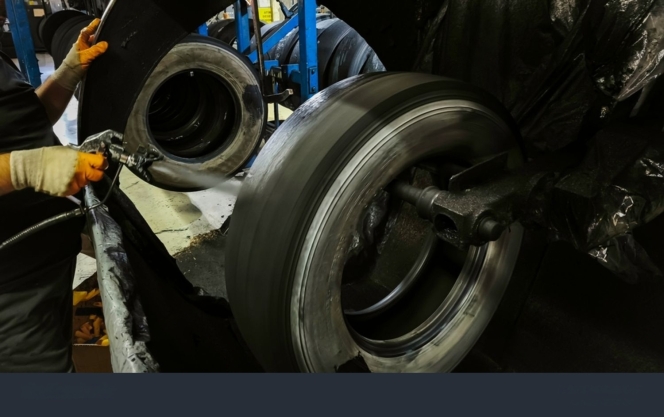
A population of over 1.4 billion people catapulting into the world’s third largest automobile market with four million trucks plying across a road network of 6.3 million kilometres supported by a USD 13.4 billion tyre market and a mining sector contributing around 2–2.5 percent of the country’s GDP demonstrate the strength of India’s automobile, freight and tyre sectors.
The story doesn’t end there as the Central Government adopts a strategic approach on reducing carbon emissions across these verticals, especially automobile and tyres, with targets such as the Net Zero Carbon Emissions by 2070, battery electric vehicles target by 2030, zero-emission truck corridors, Extended Producer Responsibility for the tyre sector; the list just goes on.
Amidst all such statistics and targets, a silent spectator remains the old and varied sector of tyre retreading. In a recent news story reported by Tyre Trends, the Indian Tyre Technical Advisory Committee (ITTAC) had made a proposal to Tyre Retreading Education Association (TREA) for mandating certain standards that will improve the quality of retreads. ITTAC has made recommendations to the BIS committee. TREA is part of the same committee. ITTAC and TREA are recommending different standards.
These standards included BIS retread standards, namely IS 15725, IS 15753, IS 15524 and IS 9168. The ITTAC had partially aligned Indian requirements with ECE R109, the European regulatory benchmark.
In a reply to the proposal, which was accessed by Tyre Trends, TREA urged the Indian Tyre Technical Advisory Committee to seek a deferment or non-applicability of BIS standard IS 15704:2018 for retreaded commercial vehicle tyres, warning that mandatory enforcement could cripple the sector.
In the letter, TREA argued that IS 15704:2018 is largely modelled on new tyre manufacturing norms and is technically unsuitable for retreading, which is a restoration and recycling process.
The standard mandates advanced laboratory tests such as spectrometer-based rubber analysis, endurance testing and compound uniformity checks, requirements that most retreading units, particularly small and medium enterprises, are not equipped to meet
The association highlighted that even large retreaders lack the infrastructure and skilled manpower needed for BIS-grade testing, while the sheer number of retreading units would make inspections and certifications operationally unmanageable for regulators.
TREA warned that compliance costs linked to machinery upgrades, audits and quality control could force 70–80 percent of units to shut down, leading to job losses, higher fleet operating costs and adverse environmental outcomes due to reduced recycling
Instead, TREA proposed that BIS prioritise retreading-specific standards such as IS 13531 and IS 15524, which focus on materials, process control, safety and quality consistency.
The body has also called for a phased transition roadmap, MSME support and industry training before any stricter norms are enforced, stressing that abrupt implementation would undermine the sector’s role in India’s circular economy.
The conundrum
India has a total of 36 administrative divisions comprising 28 states and 8 union territories. The tyre retreading sector has been continuously supporting circularity goals since the early 1970s across the world’s largest economy without getting mainstream recognition.
Even after five decades in service, the industry battles different bottlenecks including fragmentation, manpower shortage, tax pressures brought about by the recent GST revisions and now the implementation of such standards, just to name a few.
The sole practice that can simultaneously reduce carbon emissions from tyres and extend tyre life is assumed the nemesis of an ‘infamous and dangerous practice’ in some states of the country.
However, the industry has been drawing its techniques and quality parameters from the world’s oldest retreading economy, Europe.
“Big retreaders in India already have the necessary processes in place that conform to IS 15524 standards. However, as the standard is not yet mandated, we have voiced support for it because it is process-oriented and outlines how retreading should be carried out, including buffing and building procedures,” said TREA Chairman Karun Sanghi.
He added, “This standard focuses on how the work is done rather than imposing product-level testing that cannot be practically implemented. The current debate on IS 15704 stems from it being fundamentally incompatible. The standard includes requirements such as sidewall marking and destructive testing of retreaded tyres, which are impractical in a retreading environment where each tyre differs in brand, size, application and usage history,” he added.
Destructive testing, he argued, assumes uniform batch sizes. In retreading, where every casing is unique, testing even a single tyre would mean destroying finished products without yielding representative results. Applying such a framework would effectively require the destruction of every tyre in a batch, making compliance unviable.
“We have submitted our response to ITTAC and are awaiting feedback from the committee. We remain open to continued dialogue and will engage further once the committee responds to our submission,” said Sanghi.
According to him, a typical retreader processes about 300 tyres a month across multiple brands including MRF, JK Tyre, Apollo and Michelin and applications ranging from buses and trucks to mining vehicles. These casings vary widely in load cycles, operating conditions and duty patterns, often across several models from the same manufacturer.
The committee has cited European standard ECE R109, but Sanghi points to structural differences: “Europe is a global retreading hub where tyre manufacturers such as Michelin and Bridgestone dominate operations, collect their own tyres, retread them and return them to fleets, making batch-based destructive testing relevant. A similar model exists in US, where large tyre companies lead retreading and largely self-regulate without a single overarching standard. The Indian scenario is different, especially with a fragmented market.”
He stressed that the industry is not opposed to standards but to those that cannot be practically applied, warning that adopting European manufacturing-oriented norms without accounting for India’s market structure and operating realities would be counter-productive.
The debate is no longer about whether standards are needed but whether they are fit for purpose. Without accounting for India’s fragmented retreading ecosystem, enforcing impractical norms could dismantle a circular industry in the name of compliance.
TGL Season 2 Kicks Off With Hankook As Founding And Official Tire Partner
- By TT News
- December 29, 2025
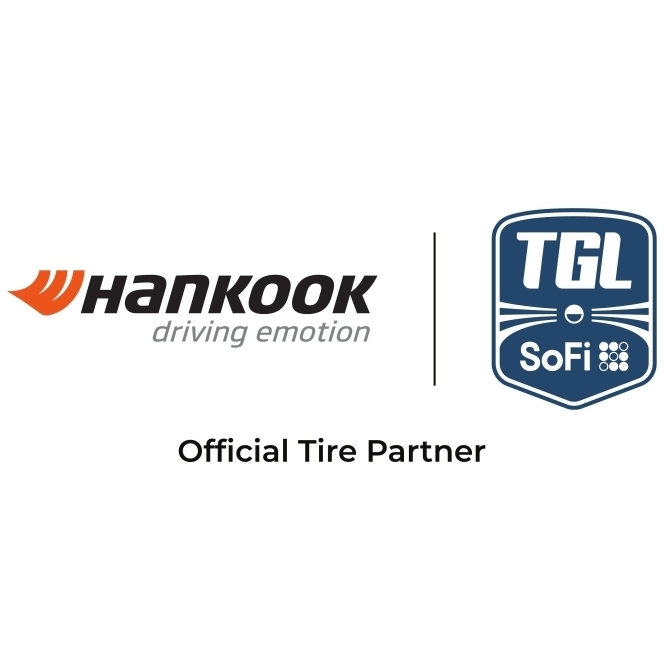
The second season of TGL Presented by SoFi, where Hankook Tire serves as the Founding and Official Tire Partner, commenced on 28 December 2025. This innovative league, a venture of TMRW Sports with backing from icons like Tiger Woods and Rory McIlroy, represents a strategic alignment for Hankook, uniting two entities driven by technological advancement. The partnership provides a global platform to reinforce Hankook's premium brand positioning across North America and worldwide through extensive visibility during broadcasts and at the state-of-the-art SoFi Center in Florida.
This unique venue embodies the league's fusion of sport and technology, featuring a massive simulator with a dedicated ScreenZone and a dynamic GreenZone. This area, equipped with a turntable and over 600 actuators, meticulously replicates real-world golf conditions indoors, creating an immersive arena experience. The competition itself is fast-paced and engaging, with teams of PGA TOUR players competing in Triples and Singles sessions over 15 holes. Innovative elements like the point-doubling ‘Hammer’, real-time strategy via ‘Hot Mic’ and a Shot Clock ensure a dynamic spectacle for fans.
The season opener presented a compelling narrative as a rematch of the inaugural finals, pitting the undefeated Atlanta Drive GC, featuring Justin Thomas and Patrick Cantlay, against a determined New York Golf Club squad led by Matt Fitzpatrick and Xander Schauffele. This match set the tone for an intensive season running through March, where six teams and 24 top golfers will compete. For Hankook, this partnership is more than signage; it is an active engagement with a global community, delivering a distinctive brand experience that bridges cutting-edge mobility and sport for enthusiasts everywhere.
Dunlop Secures CDP ‘A List’ Recognition For Climate Change And Water Security
- By TT News
- December 29, 2025
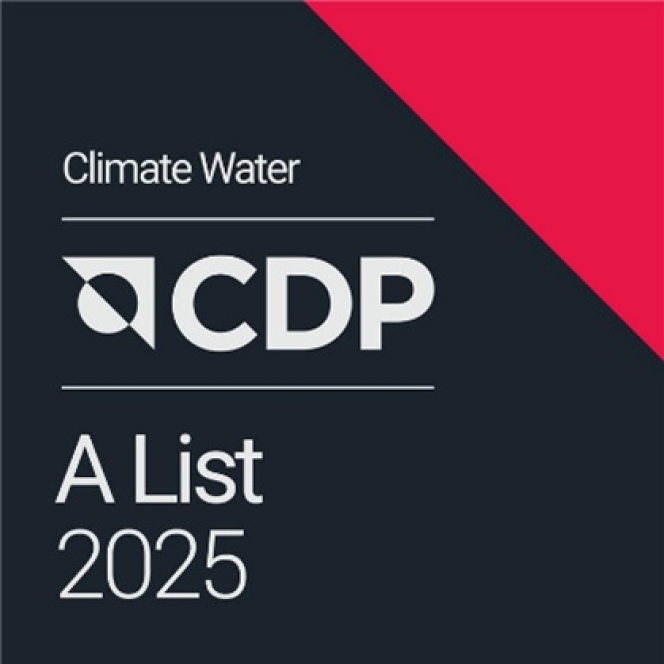
Dunlop (company name: Sumitomo Rubber Industries, Ltd.) has made its way to the annual A-List of CDP for climate change and water security. This premier designation, awarded for the first time to the company in the 2025 evaluation, recognises world-leading performance in transparency, risk management and environmental action. CDP’s annual assessment is a key benchmark for corporate sustainability across climate, water and forests.
This achievement stems from the Group’s integrated approach to material issues outlined in its corporate philosophy. It treats the interconnected challenges of climate change, biodiversity and the circular economy holistically, advancing concrete initiatives under its long-term ‘Driving Our Future’ sustainability policy.
On climate, the Group’s science-based emission reduction targets for 2030 are validated by the Science Based Targets initiative. Operational efforts include pioneering green hydrogen production at its Shirakawa Factory and developing tyres made entirely from sustainable materials by 2050. The company also works to reduce emissions across its supply chain, lowers tyre rolling resistance to improve vehicle fuel economy and extends product life through retreading.
For water security, the strategy is driven by localised risk assessments at global production sites. In seven facilities identified as high-risk, the goal is to achieve 100 percent wastewater recycling by 2050. Progress is already evident, with the company’s Thailand factory reaching full wastewater recycling in 2024.
These coordinated actions on multiple environmental fronts formed the basis for the Group’s simultaneous top-tier recognition in both critical categories from CDP.







Comments (0)
ADD COMMENT